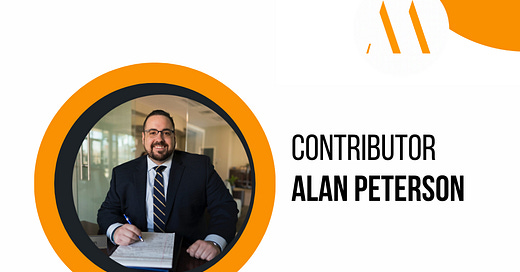Plumbing Case Study
This case study details the acquisition of a plumbing business valued at $2,500,000. The transaction utilized an SBA 7(a) loan for the primary financing, complemented by an SBA Express line of credit to support ongoing capital needs. The acquisition structure included a 5% seller note on standby for two years, with subsequent principal and interest payments over a five-year period and no balloon payment at the end. Additionally, the buyer secured a $150,000 SBA Express line of credit to ensure adequate working capital.
Transaction Structure
Purchase Price: $2,500,000
Working Capital: $150,000
SBA Guaranty Fee: $22,250
Closing Cost: $32,750
Down Payment: 5.5% of the total project ($150,000)
Seller Note: 5% of the purchase price ($125,000)
SBA 7(a) Loan Amount: $2,310,000
SBA 7(a) Term Length: 12-Months (10-years)
Prepayment Penalty: None, SBA requires 20-day notification of payoff
SBA Express Line of Credit: $150,000
Seller Note Terms:
Standby for 2 years
Principal and interest payments over 5 years beginning month-25
No balloon payment at end of term
SBA Express Line of Credit Terms:
$150,000 available for working capital needs
36-month interest only draw period
Ability to extend draw period, pay off outstanding balance via term loan, or obtain another revolving facility while paying off outstanding balance via term loan
Due Diligence and Common Red Flags
A rigorous due diligence process was employed to identify and address potential red flags commonly associated with business acquisitions. The following red flags were carefully evaluated and mitigated:
Inconsistent Financial Records:
Issue: Discrepancies in financial statements can indicate underlying issues or mismanagement.
Resolution: A detailed financial audit was conducted via full Quality of Earnings report, examining the past three years of financial statements and tax returns. This included verifying revenue streams, expense reports, and profitability ratios. Adjustments were made for any inconsistencies, and the purchase price was renegotiated to account for these discrepancies.
High Customer Concentration:
Issue: Over-reliance on a few large clients can pose a risk if key contracts are lost.
Resolution: We analyzed the customer base to assess dependency on major clients. Contracts with top clients were reviewed for renewal terms and stability, as well as change of control provisions which were absent. Efforts were made to diversify the client base post-acquisition, reducing the risk associated with customer concentration.
Operational Inefficiencies:
Issue: Inefficiencies in operations can impact profitability and growth.
Resolution: An operational review was performed to identify areas of inefficiency, including workflow processes and equipment maintenance. Recommendations for improvement were integrated into the post-acquisition business plan, including investments in updated technology and streamlined operations.
Regulatory and Compliance Issues:
Issue: Non-compliance with industry regulations can lead to legal and financial penalties.
Resolution: A compliance audit was conducted to ensure all licenses, permits, and regulatory requirements were met. Licensed key employee was identified and executed employment agreement before finalizing the acquisition, ensuring the business operated within legal standards.
Market and Competitive Pressures:
Issue: Shifts in market conditions or increased competition can affect business performance.
Resolution: A market analysis was carried out to understand the competitive landscape and market trends. The buyer developed a strategic plan to navigate competitive pressures and capitalize on market opportunities, including marketing and service expansion strategies to extend by 15 miles in every direction which would have minimal impact on logistical considerations of existing operations.
Employee Retention and Morale:
Issue: Employee dissatisfaction or turnover can disrupt operations and impact service quality.
Resolution: An assessment of employee satisfaction and turnover rates was conducted. Strategies were put in place to address any concerns, including improvements in compensation and benefits for management and supervisor level staff. A referral program was introduced for existing employees to bring in their own contacts to show ownership of process. This helped in both retention and overall growth.
Successful Acquisition and Post-Acquisition Strategy
The acquisition of the plumbing business was successfully executed with careful structuring and due diligence. The SBA 7(a) loan and SBA Express line of credit facilitated favorable financing terms, enabling the buyer to secure the business with a manageable down payment and ensure ongoing capital for operational needs.
Post-Acquisition Strategy:
Operational Enhancements: Implemented improvements based on the operational review, leading to increased efficiency and reduced costs.
Client Diversification: Launched initiatives to attract new clients and reduce reliance on any lone customer, enhancing business stability.
Compliance and Regulation: Ensured all regulatory requirements were met and maintained, avoiding potential legal issues or inability to operate.
Market Positioning: Utilized market analysis insights to refine business strategies and stay competitive. Launched marketing plan to focus on higher margin opportunities without significantly increasing overhead expense.
Conclusion
This case study demonstrates the effective use of SBA financing for acquiring a plumbing business, highlighting the importance of thorough due diligence and strategic planning. By addressing common red flags through detailed analysis and proactive measures, the acquisition was executed successfully, laying the groundwork for sustained growth and operational excellence. The business is performing very well today, with current plans of expansion through acquisition.
See ya in the inbox!
Sebastian H Amieva
PS If you seriously want to get personally mentored by myself and start buying businesses without risking your own capital, schedule a call with myself today. https://calendly.com/sebastianamieva/call
PS This is one of my jobs, and I put a lot of work into it. I believe in an ethos of paying people for their work (especially in recovery spaces, where work is undervalued and, therefore, resources are limited). If you love this newsletter, get value out of it, and believe in paying people for their work, consider a paid subscription.




